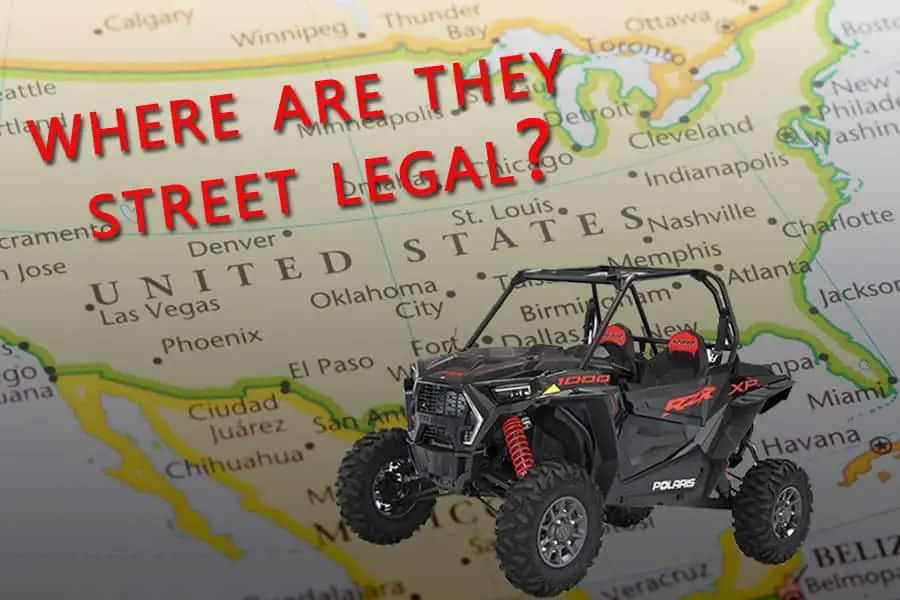My brother keeps his Yamaha YXZ at my parents’ house near McCall, Idaho, which is awesome because there are so many great trails to ride whenever I visit. Unfortunately, there are lots of roads, and even highways, between the house and the trails. Loading a side by side on a trailer and hauling it anytime you want to go for an afternoon ride is a lot of hassle. Getting that machine street legal was an absolute must. Luckily, it was a pretty easy ordeal.
How do you get an ATV street legal? It depends completely on your location what you need to do, or even whether you can. In general, you will need to get it registered, get insurance and add the following: headlights, brake lights, turn signals, horn, speedometer, tires, mirrors,windshield and lighted license plate holder.
Is it worth the Investment?The first thing you need to do is determine whether you need your ATV to be street legal. It can be a significant investment to add all the needed accessories so you will only want to undertake that investment if you live somewhere where you have a lot of trails you can access from city or county roads.
Where I live in Las Vegas, it just doesn’t make sense to get an ATV street legal. I don’t have anyplace worth riding within 20 miles of my house. If I go to the trails nearby, I am going to haul the ATVs no matter what, and there isn’t going to be any riding on actual roads at the destination. Because of that, it just doesn’t make sense to get an ATV street legal here.
On the other hand, at my parents’ place in Idaho, we can drive the ATVs around town and to the trails that cover the mountains. There, it is well worth the investment to get a whole lot more use out of your ATV and make ownership way more convenient.
Something that changed the decision for a lot of people was when the Forest Service made a big public deal about ATVs needing to be street legal to access dirt roads in forest service land.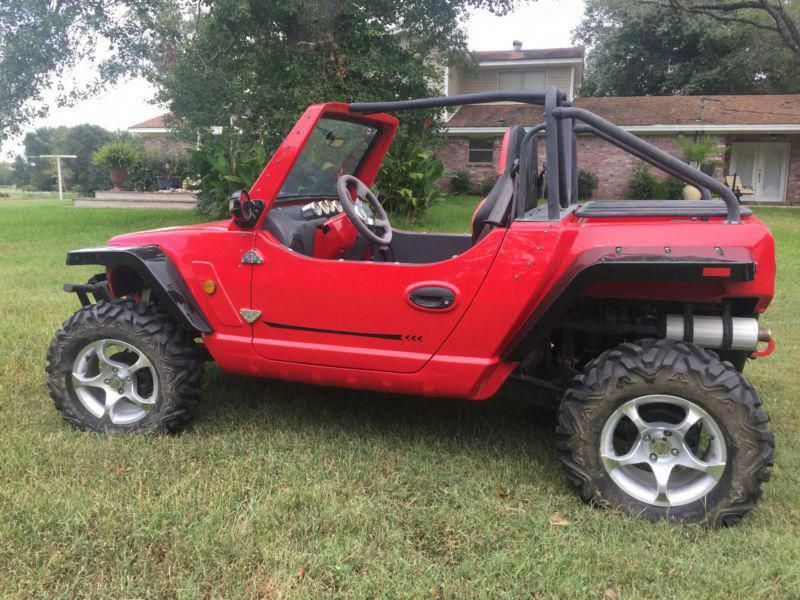 They threatened that you could get a ticket even by crossing a road while riding on a trail. I don’t know how stringent they are in every federal land, but that can be a good reason to go street legal. It is worth checking out this guide to riding on federal land if you have questions.
They threatened that you could get a ticket even by crossing a road while riding on a trail. I don’t know how stringent they are in every federal land, but that can be a good reason to go street legal. It is worth checking out this guide to riding on federal land if you have questions.
Each state has different laws regarding motor vehicles, including ATVs. Even worse, many states don’t have set rules, and it depends on the city or county you live in. Some states expressly forbid ATVs on the street, some states don’t allow street legal quads even if they don’t explicitly say so, and some states allow you to get your quad street legal with some modifications.
Some common statutes you see in states that don’t let ATVs on the streets, without explicitly stating such, include statutes that require seat belts on all four-wheeled vehicles. Many people think you can get away with treating ATVs like motorcycles, but state statutes often designate vehicles as two or four wheeled vehicles, making your ATVs the same as a car, rather than a motorcycle. When you think of what you need in a car, you quickly realize that those restrictions could make getting your quad legal impossible.
When you think of what you need in a car, you quickly realize that those restrictions could make getting your quad legal impossible.
We have a pretty awesome guide on ATV laws in every state. It doesn’t cover everything you will need because most of the laws that control being street legal have nothing to do with ATVs in particular, but it is a great place to start. We also cover a lot more, including everything state specific we know, further down in this article.
The modifications you will most likely needHorn. A horn isn’t too big of a deal to add on, but it is pretty easy to understand why you would want a horn if you are driving on the street in an ATV. Like a motorcycle, and ATV can easily get lost in a crowd of cars. You will want a horn to remind people where you are before they plow into you. Plus, if you are on the road, you will need to have a horn to let the car ahead of you know the light turned green while they were texting. If you are lucky, your turn signal kit will come with a horn, but if not, there are plenty of easy-to-install horns that you can add to your quad.
License plate holder and light. To get an ATV street legal, you need a license plate obviously, but the license plate holder and light are less obvious. I guess the police want the license plate to be very visible so they know your ATV is street legal, rather than pulling you over to figure you out you have a license plate hidden under the mud behind a mud flap. Most states require the license plate be mounted to the rear of the vehicle. Some UTVs have tabs pre-welded on the roll bar, which makes it really easy.
Turn Signals. Here is another obvious one. Traffic needs to know which way you’re turning. Back in the day, you could have gotten away with just using hand signals, but I doubt many drivers would realize what the heck you mean by pointing your arms around while you are driving. It shouldn’t be that big of a deal to add turn signals to your ATV as there are many kits out there that you just have to plug in. You will need to make sure that it comes with a switch that mounts to the steering column to make it easy to use. As a bonus, many kits also include hazard lights.
As a bonus, many kits also include hazard lights.
Mirrors. Another modification that seems pretty straight forward. You don’t have to check your blind spot too often on the trail, but will need to on the road. In most states, you will need both side mirrors and a rearview mirror. Luckily, mirrors should be pretty easy to install and there are universal options that should work just fine. Obviously, the roll bars on a UTV are going to make it a bit easier than if you are dealing with an ATV. You will want to pay close attention to the tube size you need for your ATV since it is not universal.
The most common mirrors are made of plastic or aluminum. Plastic is the cheaper option, but it gets damaged a lot easier. If you ride rough trails or just ride a lot, aluminum is probably worth the extra investment.
Tires. One of the biggest reasons driving ATVs is not safe on roads is the tires are not designed for use on streets. Getting street tires will mainly give your tires better grip.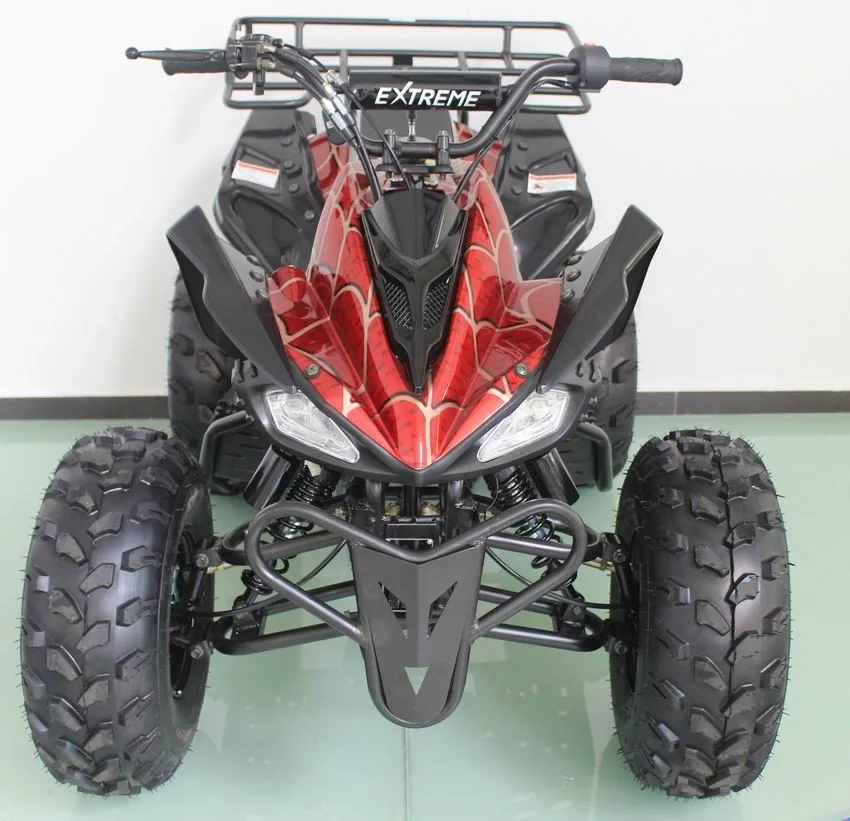 The extra grip will go a long ways to helping you brake better and take corners at a better speed. An added side benefit is street tires will last a lot longer on the street than off road tires, whose tread would be gone in no time.
The extra grip will go a long ways to helping you brake better and take corners at a better speed. An added side benefit is street tires will last a lot longer on the street than off road tires, whose tread would be gone in no time.
The easiest way to determine if your ATV tires are street legal is to see if they are approved by the Department of Transportation (DOT). You can find out if your tires are DOT-approved by looking at the code that is molded on the side wall of the tire. Getting a good DOT-approved tire can be tough to find for an ATV because you tend to lose a lot of off-road capabilities. The trick is finding a good street-legal tire that will perform well on the street, but also go off road without issues. We like this set of tires.
Tail light and brake lights. With most UTVs and some ATVs, you are going to already have these so hopefully it isn’t a big deal. Like with cars, the tail lights and brake lights usually come in the same light box, where the brake light lights up brighter than the tail light.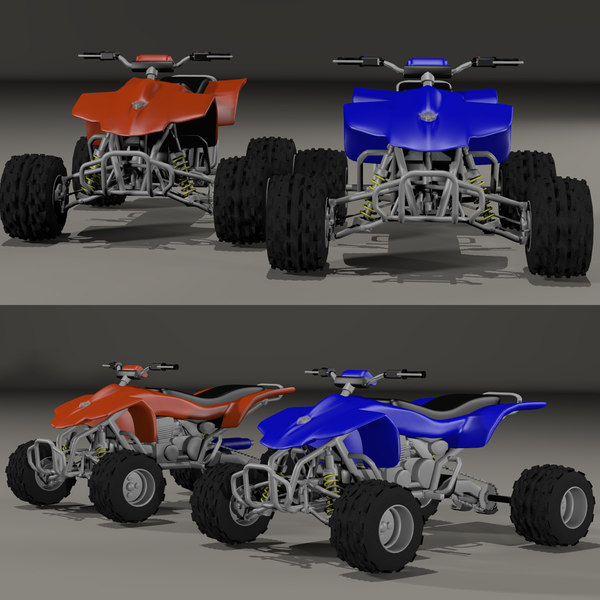
Speedometer. There is not much to a speedometer. It just tells you how fast you are going. Since streets have speed limits, you will need to make sure you are staying under the speed limit. Luckily, most ATVs come with a speedometer so you shouldn’t have to worry about this one.
Rear reflector. Most ATVs and UTVs come equipped with some kind of reflectors. Hopefully that will be enough, but you will want to check for your state where reflectors are required and whether they are required to be a certain color. If you need to add something additional, you can easily add reflectors wherever it is needed.
Mudflaps. Most ATVs and UTVs come with mudflaps so this shouldn’t be a concern. If you don’t have any, you will need to get some since you can’t be flinging mud and rocks at other cars on the street.
Windshield. Anyone that has been pegged in the face with debris at 50 mph can understand the importance of having a windshield when you are driving on the street. While windshields are a great choice, your state may not require one. Some states let your ATV be street legal as long as you operate it with goggles or other eye protection.
While windshields are a great choice, your state may not require one. Some states let your ATV be street legal as long as you operate it with goggles or other eye protection.
Windshields come in a lot of varieties to accommodate whatever style you like. When you are picking a windshield, you will have to decide on the design and the material you want. Your state may require a certain style, but if not, your options are usually full, half or flip-out windshields. When it comes to material, there are less restrictions, but some states do have them. Glass windshields are typically the strongest and are easiest to fit with a windshield wipers. Glass windshields typically only come as full windshields and are much heavier. Polycarbonate windshields are much lighter and cheaper, and come in more styles, but they also scratch a lot easier.
Muffler. Some states require specifically quieter mufflers, some just require a muffler with a spark arrestor. Check out what your state requires and make sure yours matches.
Headlights. Most ATVs come with headlights so it should not be a big deal. You will want to check your state requirements though as some states have certain requirement as to how bright your headlights are. Because ATV lights can be pretty weak, you may have to upgrade, which might be a good idea regardless, as we discuss below.
The other things you may needRegistration. Your ride isn’t street-legal if it isn’t registered. All the requirements we talk about here are what allow you to register your ATV.
Insurance. Unsurprisingly, if you are going to drive your ATV on the street with cars, you have to be insured like one. Most auto policies will let you add an ATV to your policy, or you can search out a specialty ATV policy if you prefer.
Inspection. Many states require you pass some kind of inspection before you can register the ATV. What is actually required by your state could be a full inspection by a state official, a sign off by an approved shop or you may just be required to bring in receipts and documentation showing you did the required modifications. Since you are going to have to show you met each requirement with exactness, be sure you read over all your state regulations and know exactly where each mirror and turn signal has to be placed and how big they must be.
Since you are going to have to show you met each requirement with exactness, be sure you read over all your state regulations and know exactly where each mirror and turn signal has to be placed and how big they must be.
Driver’s License. While you can get away, depending on your state, with driving an ATV without a driver’s license, that is never going to be the case if you are driving on city, county or state roads and highways. In addition, a driver’s license is required for many Forest Service road and BLM-maintained roadways.
Some other things you might wantA tethered kill switch can be a great investment on a street legal quad, especially since they cost all of about $5. The kill switch attaches to your wrist or gear and will kill the engine if you get thrown from your quad. If you get thrown from your quad on a trail, it will probably just continue on until it hits a dirt bank or tree to stop. On the streets, your ATV will most likely plow into another car if you fall off, causing an accident and potentially injuring or killing someone.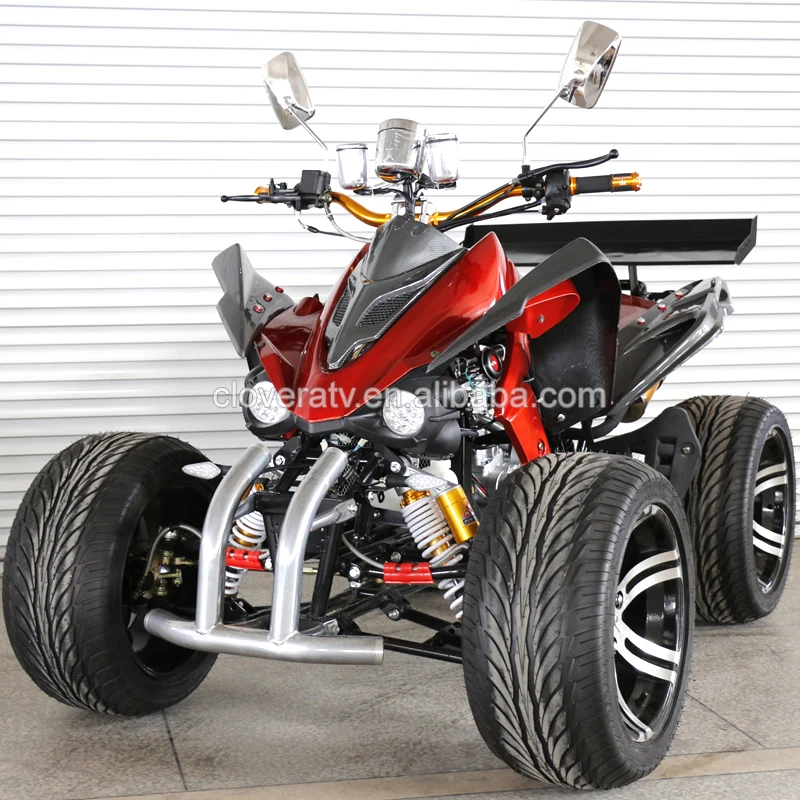
A headlight is required, but you will want to consider getting a bright headlight. Many ATV headlights are fine in the forest or on the farm, but they won’t do much good on the road. On the streets, you are likely to driving a bit faster, and will more easily outdrive the distance of your lights. Plus, an average road is a lot wider than your typical ATV trail so there is just more to light.
What’s the deal with street legal kitYou can find universal street legal kits or kits designed for most models of ATV/UTV. These kits can be great, but they are not typically designed to be state specific. Because of that, the kits will typically include most of the basic things we discussed above, like turn signals, lighted license plate frames and rear view mirrors. Usually, the kits are a great starting point, but you will likely have to supplement them based on your state’s specific requirements, so don’t think you can just buy a kit and be okay. You have to look into your state’s specific requirements.
You have to look into your state’s specific requirements.
While these kits are usually pretty easy to install, but there is usually some special wiring knowledge needed. This is easy to overcome if you obtain a wiring diagram for your ATV or UTV. This will guide you pretty well. You should also do a little research to ensure your battery can handle the extra accessories.
Some state specific guidelinesOne thing to keep in mind is whether you can get an ATV licensed in one state and have it be street legal your state. This is a common tactic advertised by many companies that specialize in getting ATVs street legal. Unfortunately, the full faith and credit clause, which allows you to drive your car in any state, doesn’t always work the same way with ATVs. Some states will honor out-of-state registrations without any other requirements, but many states have additional regulations that have nothing to do with registrations. For example, one state may register your ATV without a seat belt while your state may require a seat belt on any four-wheeled vehicle. In that situation, you are getting a ticket regardless of your registration. Additionally, the full faith and credit clause doesn’t require a state make something legal just because another state did. So if a state makes it illegal to drive an ATV on a highway, it is illegal regardless of registration. Think about it this way, you can buy marijuana legally in Colorado, but that doesn’t mean you can bring it into Idaho and smoke it legally. The same is true with ATVs on the street unless your state says otherwise, so make sure you read up on your state before making a big investment.
In that situation, you are getting a ticket regardless of your registration. Additionally, the full faith and credit clause doesn’t require a state make something legal just because another state did. So if a state makes it illegal to drive an ATV on a highway, it is illegal regardless of registration. Think about it this way, you can buy marijuana legally in Colorado, but that doesn’t mean you can bring it into Idaho and smoke it legally. The same is true with ATVs on the street unless your state says otherwise, so make sure you read up on your state before making a big investment.
With that, these are the requirements for the most popular states. We didn’t include them all, but check our menu for state laws and you can find a lot more information.
ArizonaArizona is known as being one of the easiest states to get your ATV or UTV street legal. Indeed, most ATVs you see cruising around California are licensed in Arizona, which is a whole different discussion.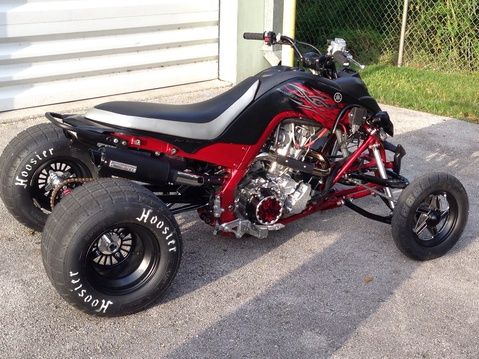 If you live in Phoenix or Tucson, you will need to get your ATV emissions tested. You will also need to have the following on your ATV or UTV throughout the state: a brake, brake light, 1-2 headlights that shine at least 500 feet ahead, at least one tail light visible from 500 feet to the rear, at least one red reflector, securely fastened and lighted license plate, a horn audible from at least 200 feet, a muffler in constant operation, a rear view mirror, seat and footrests for the operator and a fuel tank cap. I would hope you already have most of those requirements so, while it seems like a lot, it really is one of the easiest states there is to be compliant.
If you live in Phoenix or Tucson, you will need to get your ATV emissions tested. You will also need to have the following on your ATV or UTV throughout the state: a brake, brake light, 1-2 headlights that shine at least 500 feet ahead, at least one tail light visible from 500 feet to the rear, at least one red reflector, securely fastened and lighted license plate, a horn audible from at least 200 feet, a muffler in constant operation, a rear view mirror, seat and footrests for the operator and a fuel tank cap. I would hope you already have most of those requirements so, while it seems like a lot, it really is one of the easiest states there is to be compliant.
California is one of the toughest states to figure out. There are people that say you can get an ATV, or at least a UTV, street legal, while others, reading the same laws, have concluded it is impossible. California has the Air Resources Board (CARB) office, which has established strict emission standards and guidelines for on- and off-highway vehicles.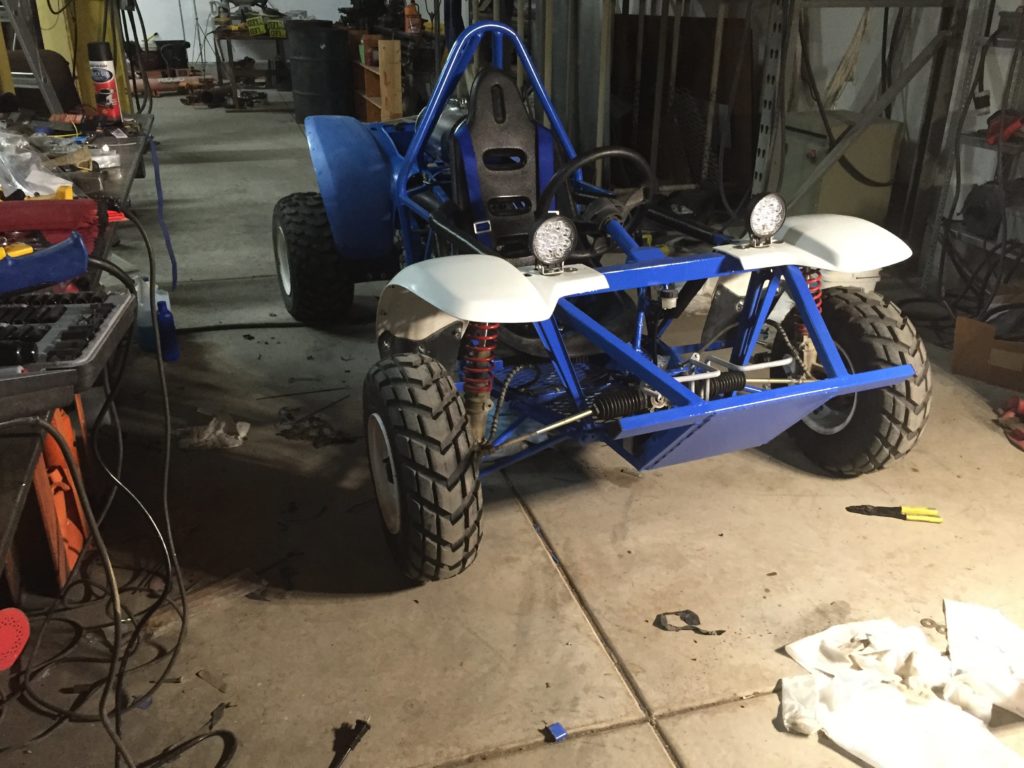 Manufacturers must meet certain standards to attain a sticker indicating their vehicles are for on-highway use. are ATVs are considered off-highway vehicles, which do not meet on-highway emission regulations, and cannot be registered as on-highway vehicles unless, according to some, many modifications are made.
Manufacturers must meet certain standards to attain a sticker indicating their vehicles are for on-highway use. are ATVs are considered off-highway vehicles, which do not meet on-highway emission regulations, and cannot be registered as on-highway vehicles unless, according to some, many modifications are made.
There is a pretty helpful debate in Colorado. Most say you can’t get a street legal ATV in Colorado because there are specific regulations prohibiting their use on most public streets and roads outside of designated public land trails and roads. However, it appears to depend what county you live in as some areas in Colorado treat ATV’s as motorcycles when it comes to licensing so you actually can register them for use on the streets. If you live in Colorado, let us know your experience.
IdahoATV’s can be made street legal in Idaho, but you will need to read the regulations.
IndianaATV’s can be made street legal in Indiana, but you will need to read the regulations.
ATV’s can be made street legal in Kansas, but you will need to read the regulations.
KentuckyATV’s can be made street legal in Kentucky, but you will need to read the regulations.
MaineI am not sure about getting an ATV registered in Maine, but I have heard that many rural counties have made ATVs legal on town roads without anything special needed.
MinnesotaATV’s can be made street legal in Minnesota, but you will need to read the regulations.
MontanaUnsurprisingly, Montana is one of the easiest states to get your ATV street legal. Basically, all you need to do is add brake lights, mirrors, a horn, turn signals, a lighted license plate holder, reflectors, mud flaps and a quiet muffler. Street legal ATVs are pretty common in many parts of Montana.
MichiganATV’s can be made street legal in Michigan, but you will need to read the regulations. Michigan’s regulations are considered some of the most restrictive and expensive. For example, Michigan requires a full, glass windshield with a windshield wiper and washer.
For example, Michigan requires a full, glass windshield with a windshield wiper and washer.
ATV’s can be made street legal in Nebraska, but you will need to read the regulations.
NevadaATV’s can be made street legal in Nevada, but you will need to read the regulations. One regulation is that Nevada only permits ATVs on roads with speed limits 45 mph and under.
New HampshireATV’s can be made street legal in New Hampshire, but you will need to read the regulations.
New MexicoUnfortunately, New Mexico has specific provisions prohibiting the use of ATVs on most public streets and roads outside of designated public land trails and roads. As such, you aren’t going to get an ATV street legal in New Mexico.
North DakotaATV’s can be made street legal in North Dakota, but you will need to read the regulations.
OhioATV’s can be made street legal in Ohio, but you will need to read the regulations.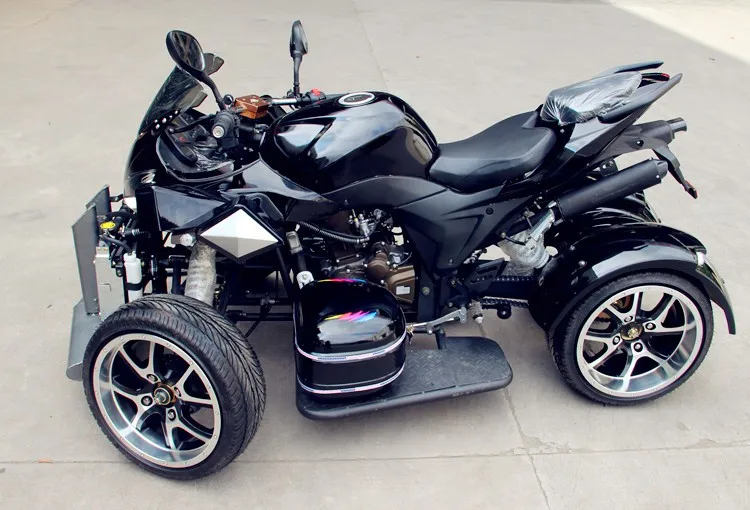
ATVs cannot be made street legal in Oregon, and out-of-state plates will not change that.
South DakotaATV’s can be made street legal in South Dakota, but you will need to read the regulations, which are known as being some of the least restrictive of all the states.
TennesseeATV’s can be made street legal in Tennessee, but you will need to read the regulations. One regulation is that Tennessee only permits ATVs on roads with speed limits 35 mph and under.
TexasATV’s can be made street legal in Texas, but you will need to read the regulations.
UtahIn Utah, you have to title and register an ATV to ride it on the street, which includes an initial and annual fee. The ATV ust pass a safety inspection before the first registration, even if your ATV is an exempt model year. The following equipment or modifications are required in Utah: headlamp, tail lamp, illuminated license plate (by a white light), rear red reflector, stop lamp, amber or red electric turn signal on front and rear (rear must be red), braking system, a horn, muffler system, rearview mirrors, a windshield or eye protection and an illuminated speedometer. If the ATV is designed for multiple passengers, each passenger must have their own footrest and handhold. If you have a side by side, each occupant must have a seat belt and the driver’s seat must be between 25 and 40 inches in height. The ATV must be between 30 and 70 inches wide at all locations, including the tires. The tire tread must be at least 2/32 inches and the tires may not exceed 29 inches in height or be larger than made available for the ATV model by the manufacturer. Finally, the ATV may only not exceed 50 miles per hour (or the posted speed limit). On roads with a higher speed limit, the ATV must be driven on the extreme right side of the roadway. Utah will only register ATVs to Utah residents.
If the ATV is designed for multiple passengers, each passenger must have their own footrest and handhold. If you have a side by side, each occupant must have a seat belt and the driver’s seat must be between 25 and 40 inches in height. The ATV must be between 30 and 70 inches wide at all locations, including the tires. The tire tread must be at least 2/32 inches and the tires may not exceed 29 inches in height or be larger than made available for the ATV model by the manufacturer. Finally, the ATV may only not exceed 50 miles per hour (or the posted speed limit). On roads with a higher speed limit, the ATV must be driven on the extreme right side of the roadway. Utah will only register ATVs to Utah residents.
ATV’s can be made street legal in Vermont, but you will need to read the regulations.
WashingtonWashington is another state that is on the easier side when it comes to getting a UTV street legal, but not so much an ATV. It is mostly just adding the right modifications, including the following (many of which you likely already have): a head lamp, 2 tail lamps, a stop lamp, reflectors, turn signals, brakes, 2 mirrors, a horn, a spark arrestor, a windshield (unless you wear glasses, goggles or face protection) and a seatbelt or safety harness.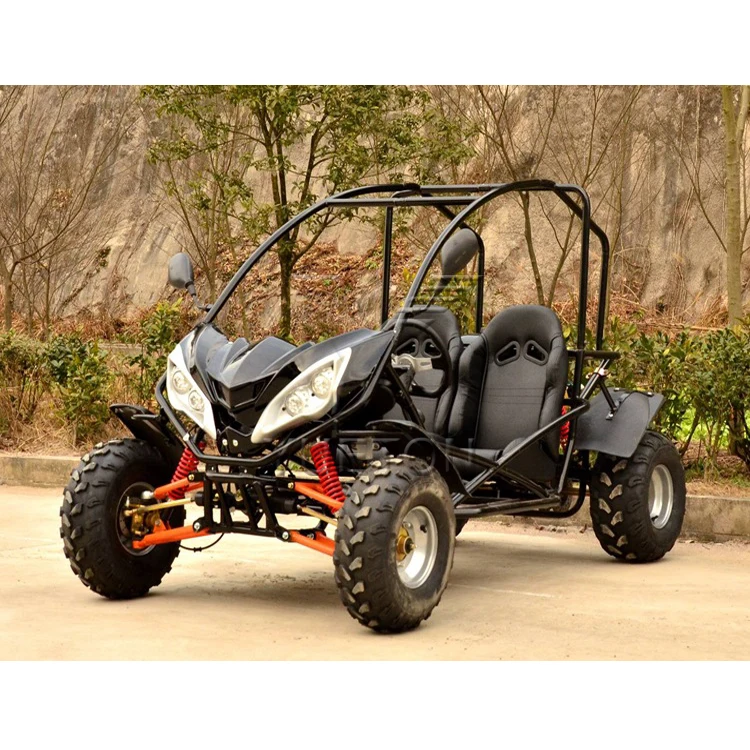 The only real difficulty for Washington is the seat belt requirement, which all but rules out ATVs, but is easy with a UTV. Washington only permits ATVs on roads with speed limits 45 mph and under.
The only real difficulty for Washington is the seat belt requirement, which all but rules out ATVs, but is easy with a UTV. Washington only permits ATVs on roads with speed limits 45 mph and under.
West VIrginia has pretty gracious regulations for getting ATVs street legal. In fact, free travel is permitted on the city streets of the Hatfield-McCoy trail system.
WisconsinATV’s can be made street legal in Wisconsin, but you will need to read the regulations.
WyomingATV’s can be made street legal in Wyoming, but you will need to read the regulations. Wyoming is known to be one of the least restrictive states when it comes to getting your ATV street legal so congrats to those living in Wyoming.
Justin Dake
Street Legality
Justin Dake
Street Legality
You think it’s cool to rip around town on a four-wheeler? Want to go on a long trip exploring the woods and roads on an ATV? Think it’s cool to ride these things on public roads? Well so do we. But Johnny Law doesn’t. That’s why you need to have a street legal ATV to do it with!
But Johnny Law doesn’t. That’s why you need to have a street legal ATV to do it with!
Making a quad street legal isn’t all that hard, and you can make it happen for a couple hundred bucks. Considering how expensive the ticket would be for riding an unlicensed, unregistered, un-legal ATV down a busy thoroughfare, this is money and time you’ll never regret spending.
Let me tell you how to make your ATV street legal and why you need to do it now.
The Street Legal ATV We SoldIf you follow our blog you know we build awesome street legal go karts. You guys liked them so much that we decided to start building custom ATVs, and like the go karts these street legal ATVs were for sale for a limited time.
You can see pictures of them all over this article, and let me tell you, they were sweet.
These street legal quads came with plates, title, and registration already done in your name. We offered custom wheels and tires, a chrome-plated bull bar, a stretched swing arm, custom suspension, and pretty much anything the buyer wanted. Those limited-edition street legal ATVs are out prowling the streets right now, soaking up the sun and ripping around towns all over the USA.
We offered custom wheels and tires, a chrome-plated bull bar, a stretched swing arm, custom suspension, and pretty much anything the buyer wanted. Those limited-edition street legal ATVs are out prowling the streets right now, soaking up the sun and ripping around towns all over the USA.
Have an ATV, like a Raptor or Scrambler? Great! You can make your own ATV street legal in an afternoon. No more trailering your ride to the trails, just ride it on the road.
3 Reasons to Make Your ATV Street LegalIt’s CONVENIENT. You can go anywhere a car can go – and a lot further. It’s a nice day out, and you don’t feel like loading your ATV into the truck just to get to your favorite riding spot. With a street legal ATV, you don’t have to! You can ride to the farm, the beach, the trails, the Taco Bell, or the local meeting place where all the car guys hang out.
It’s FUN. Street legal ATVs can be customized just like cars and motorcycles, but they can go places those others can’t. Jumps, wheelies, skids, donuts, and off-road exploration are just a few of the things you should only do when it’s legal to do so 😉
Street legal ATVs can be customized just like cars and motorcycles, but they can go places those others can’t. Jumps, wheelies, skids, donuts, and off-road exploration are just a few of the things you should only do when it’s legal to do so 😉
It’s EASY. There aren’t many parts involved in making a quad bike street legal. And Dirt Legal’s titling services can get your ATV a legal license plate, which might sound crazy but it’s what we do every day.
Parts Needed to Make an ATV Street LegalEach state has different laws regarding motor vehicles, and other countries do too. This generic information should help you meet the minimum legal requirements across most of the United States. Always check your local laws before operating a street legal ATV on public roads.
Some states don’t allow street legal quads even if they don’t explicitly say so, because their laws say something crafty like “all four-wheel vehicles newer than 19xx must have seatbelts” or “all four-wheel vehicles must have fenders that cover most of the tire.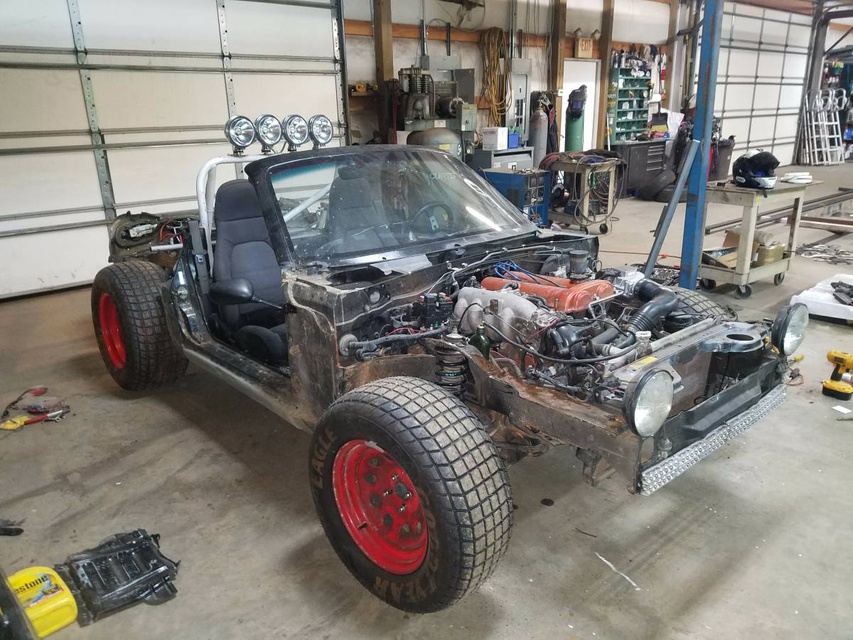 ”
”
Is that bullsh*t? Heck yeah. That’s why Dirt Legal gets you an out of state title and license plate to make your street legal ATV legally licensed and insurable. There are a few other things you’ll need to make your quad street legal:
Horn. You need this so other motorists will know they’re taking too long in the Taco Bell drive thru. Did you order for the entire town? Get your Cinnabon Delights and get out of my way.
License plate holder and light. You need these so Johnny Law will know your ATV is in fact street legal. Without them, you might have to answer a few questions down at the station.
Blinkers. Traffic needs to know which way you’re turning. That also means you need hand controls to turn the blinkers on and off. I know what you’re thinking: BMWs don’t need blinkers so why should ATVs? It’s just the way it is.
Mirrors.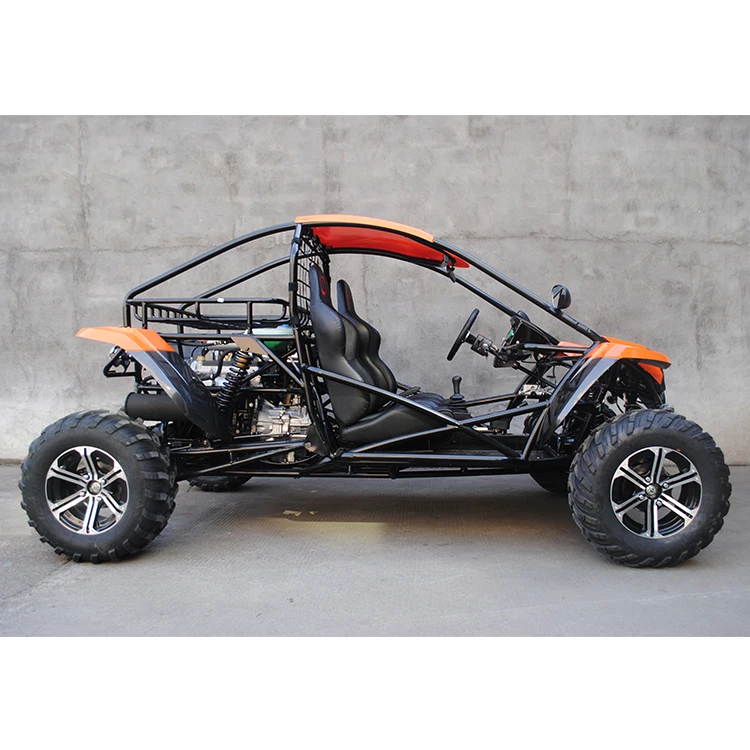 These are critical for seeing the look on your friend’s face when you pull on his Civic with your ATV.
These are critical for seeing the look on your friend’s face when you pull on his Civic with your ATV.
You can buy all that stuff from our store with all wiring and hardware included for a few hundred bucks. Not to talk sh*t on those eBay specials, but we’ve tested our stuff and we know it will last.
Extra Safety Never HurtsAnother thing to consider is getting street tires for your street legal ATV. You’ll spend a lot of money on them, but here’s why they’re worth it:
Extra grip means better cornering and pulls
Extra grip means extra safety (and better braking)
You won’t wear through knobbies on a regular basis
Another critical safety feature to add is a tethered kill switch. It attaches to your wrist or gear and will kill the engine if you go flying off the bike.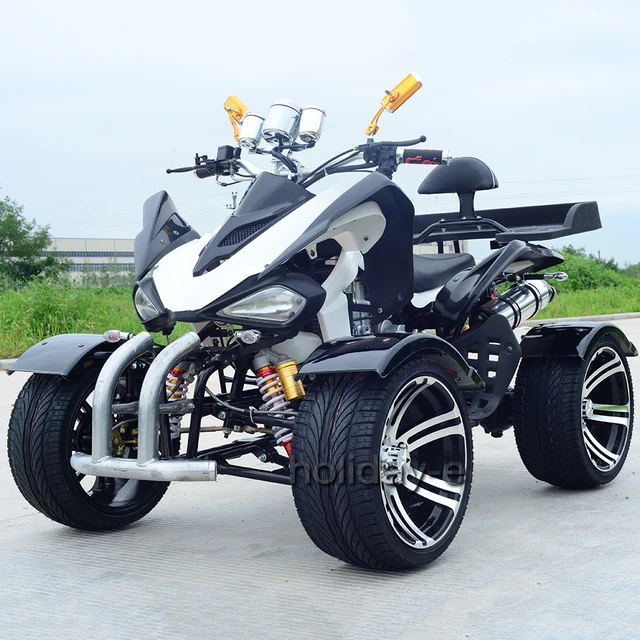 It’s a grim thing to think about, but the last thing you want is for your street legal ATV to plow into someone’s car right after you’ve been in an accident.
It’s a grim thing to think about, but the last thing you want is for your street legal ATV to plow into someone’s car right after you’ve been in an accident.
One more thing to consider is getting a bright headlight. Many ATV headlights are fine in the forest or on the farm, but they won’t cut it on the road. When you leave the bright lights of the city, you may find yourself unable to see deer and other drivers may be less likely to see you heading their way. Trust me, brighter is always better.
How to Title an ATV for Street UseThe most important things you need are a title, license plate, and registration. These are the hardest parts to get on your own, but Dirt Legal will do all that work for you. We specialize in navigating the maze of DMV documents and forms, and with a 99.9% success rate we guarantee a clean title, plate, and reg for your ATV or your money back.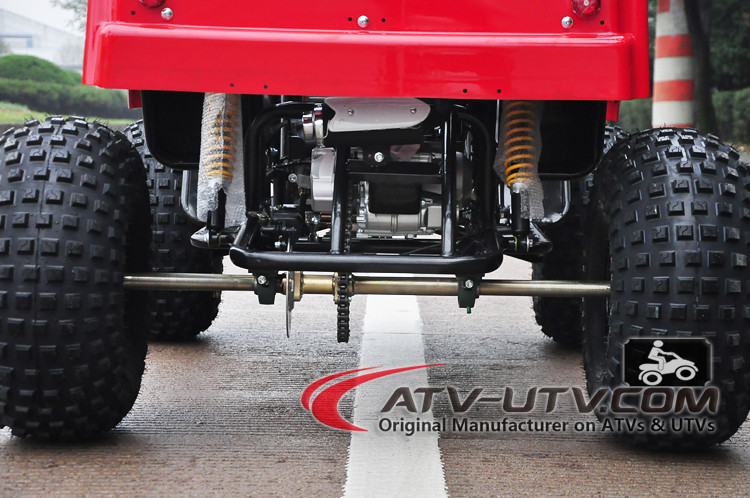
There’s no inspection required
You don’t have to visit the DMV
Just add street legal parts and you’re done!
It doesn’t matter where your ATV was made, who made it, or how rough it looks, we can title it – even if you only have a Bill of Sale to prove you own it!
Sure, you could do this yourself. Get ready to spend hours poring over your state’s laws, laws which often change without notice. Cross your fingers and hope all your paperwork is correct the first time, because if it isn’t you’ll be paying fees and spending even more time to get it right. And after all that work, something could still go wrong.
Dirt Legal carries a 100% Satisfaction Guarantee. If we fail to make your go kart street legal, you get your money back. No questions asked. It’s the safe bet to make your ATV street legal.
Follow this link to start your conversion. Call or email us with any questions about the process, and get your ATV, quad bike, or four-wheeler street legal today.
Tagged: Yes you can make your ATV Street Legal. Here's ours., UTVGUIDE
In the summer season, many fans of extreme recreation seriously think about buying an ATV. Off-road driving, fresh air and a great way to get away from the bustle of the city! However, most of those who want to purchase an ATV do not know the legal aspects of registering it with government agencies and obtaining the right to drive. This is what will be discussed below.
From a legal point of view, an ATV is a wheeled off-road motor vehicle.
ATVs are technically classified as motor vehicles. The list of all motor vehicles is indicated in Appendix No. 1 of Decree of the Government of the Russian Federation of September 10, 2009 No. 720.
To control this type of equipment, you need a certificate of a tractor driver (tractor driver) of category A1, which is expressly indicated in paragraphs. 3 4 Decrees of the Government of the Russian Federation of July 12, 1999 N 796.
To drive a quad bike you need:
The exam is taken by the Gostekhnadzor body, after writing an application, presenting a passport, a medical certificate, if you were trained at a driving school, you must present a document confirming the completion of training, a photo and a receipt for paying the state duty. The exam takes place at the place of registration of the candidate for obtaining the right to drive an ATV.
You got the right to drive an ATV! Perfect! Now you need to get the long-awaited ATV!
Decree of the Government of the Russian Federation of 12. 08.1994 N 938 obliges to register motor vehicles with a working volume of an internal combustion engine of more than 50 cubic meters. cm or a maximum motor power of more than 4 kW. That is, if your ATV has an engine with a power higher than the values indicated above, its registration is required.
08.1994 N 938 obliges to register motor vehicles with a working volume of an internal combustion engine of more than 50 cubic meters. cm or a maximum motor power of more than 4 kW. That is, if your ATV has an engine with a power higher than the values indicated above, its registration is required.
If, according to the technical documentation for your ATV, it is allowed to use it on public roads and its speed exceeds 50 km / h, then the ATV can be registered with the traffic police of the Ministry of Internal Affairs of the Russian Federation and Gostekhnadzor. And if your ATV cannot be used on public roads, then registration is carried out only in Gostekhnadzor.
After the purchase of an ATV, the law provides 10 days for its registration, which is carried out upon presentation of a document confirming the acquisition of ownership of the ATV (contract of sale, exchange, donation, certificate of inheritance, etc.), and the passport of the corresponding vehicle (ATV ).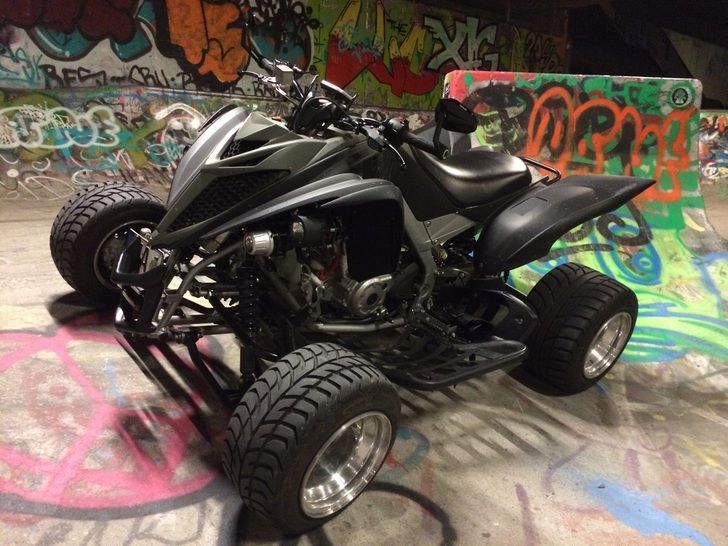
Separately, it is worth mentioning OSAGO. Quad bikes can be issued either PTS (vehicle passport) or PSM (self-propelled vehicle passport). If your ATV is equipped with a PTS, then it can be used on public roads. If your ATV develops a speed of more than 20 km/h, then to register such an ATV you need an OSAGO policy. If your ATV has a PSM, then it cannot be operated on public roads and an OSAGO policy is not required.
As for technical inspection. If you are the owner of an ATV with a PTS, then in the first three years, including the year of manufacture, inspection is not required, you will receive OSAGO without hindrance. If the ATV is already from three to seven years old, then the inspection is carried out every 24 months. Without such an examination and a diagnostic card, you will not receive OSAGO. ATVs over seven years old should be inspected every 12 months. Simply put, ATVs with PTS are operated like ordinary motor vehicles and motorcycles, the procedure for carrying out all legal procedures is similar to that applied to ordinary cars.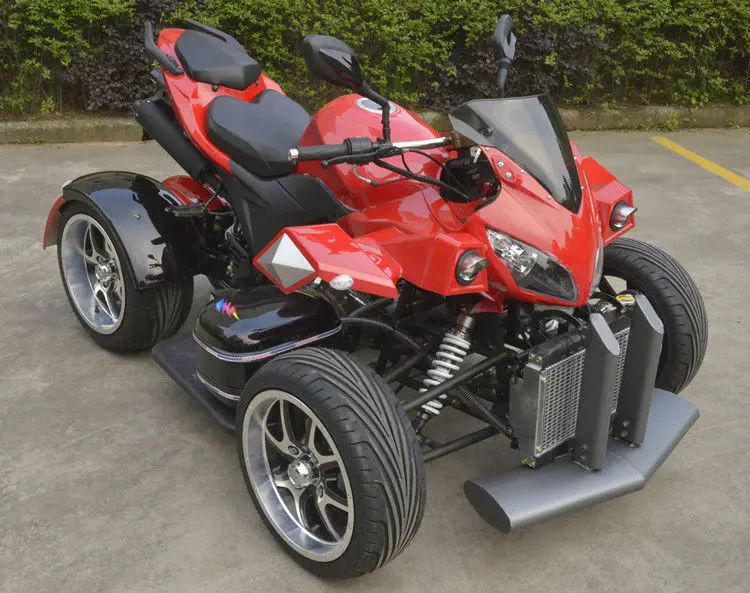
If you have an ATV with PSM, then you need to obtain a certificate of technical inspection annually. With regard to ATVs, from the date of manufacture of which no more than one year has passed and which have not been in operation, the first technical inspection is carried out without checking the technical condition of the ATV, which is indicated in clause 5 of Decree of the Government of the Russian Federation of November 13, 2013 No. 1013 On technical inspection self-propelled machines and other types of equipment registered by the bodies exercising state supervision over their technical condition.
Now you are familiar with the main aspects of acquiring and driving an ATV, you can safely go towards extreme recreation. Good luck!
Author: Orest Matsala, lawyer at the European Legal Service
We publish only verified information
Article author
Antonova Marina Alexandrovna Lead Alimony Lawyer
Experience 11 years
Consultations 30000
Expert in alimony collection and family law.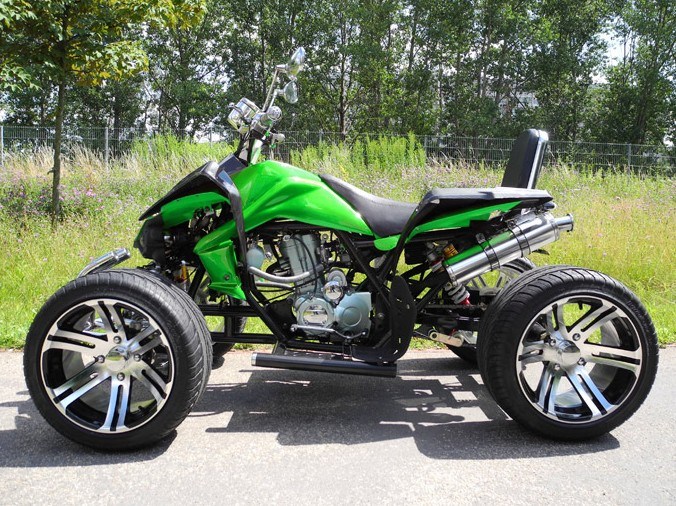 Always a soul ill for the solution of each situation. Marina is sure that “the customer is always right”, she has more than 30,000 positively resolved urgent customer requests.
Always a soul ill for the solution of each situation. Marina is sure that “the customer is always right”, she has more than 30,000 positively resolved urgent customer requests.
You agree that the maximum speed will be limited for safety reasons
Persons over 16 years old are allowed to drive ATVs.
The total load on the ATV must not exceed 150 kg.
While driving, the driver must hold the steering wheel firmly, the passenger must hold the special handles.
When cornering, move (tilt) the body in the direction of the turn.
When tilting the ATV, move (tilt) the body in the direction opposite to the slope.
Always keep your feet on the footrests when moving, even when leaning over.
We provide a free ATV driving instruction before you start using it.
If you notice fluid leaks and/or other problems, stop the engine immediately and inform your instructor.
If you detect the operation of warning signs on the instrument panel (during the initial briefing, you will be shown control devices that you should pay attention to throughout the trip), immediately turn off the engine and inform the instructor.
The ATV before and after the rental is checked in your presence for breakdowns and damages, after which the acceptance certificate is signed.
Ride on a quad bike, always wearing helmets only, protective suits are provided free of charge on request.
In the event of a breakdown or accident, inform the instructor or contact him by phone.
If the ATV is damaged due to your fault, you pay the cost of repairs and spare parts.
The time spent during the trip to fix problems that occurred through your fault is not compensated.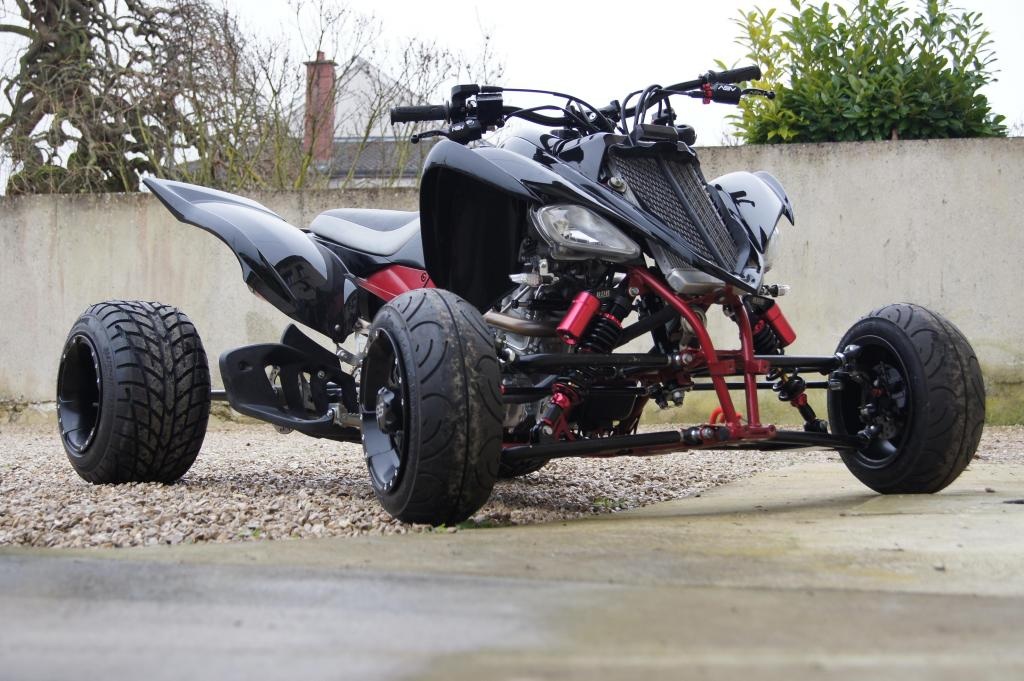
You must be instructed in how to operate the ATV before starting operation;
You agree to follow the speed limit set by the guide (instructor).
Do not succumb to the provocations of other citizens to participate in the race; clashes and other actions that can directly or indirectly cause damage to property and citizens;
Do not interfere with your actions or omissions to comply with these rules.
Drive onto highways and other public roads.
To tow other ATVs, or any other vehicles.
Leave ATV unattended.
Crossing deep water obstacles, driving over fires and areas with smoke or open flames is prohibited.
Gear shifting without stopping the machinery.
Drunk or drugged ATV riding.
Intentional collision with other ATVs.
Intentional collision with obstacles.
Provoking others to collide.
Overtake the instructor and ATVs in front.
Deliberately fall behind the convoy and then overtake the convoy at high speed.
Do not follow the instructions of the instructor.
Touch moving parts such as wheels, drive shafts, variator pulleys, etc.
Talk aggressively, use profanity, and do anything that might disturb the people around you.
• Do not operate the ATV without a properly sized crash helmet. It is also necessary to wear eye protection, (protective mask or goggles).
• Do not consume alcohol or drugs before or while operating an ATV.
• Always follow the instructions and follow the Instructor's recommendations.
• Before each use, make sure the ATV is in good condition and safe to ride.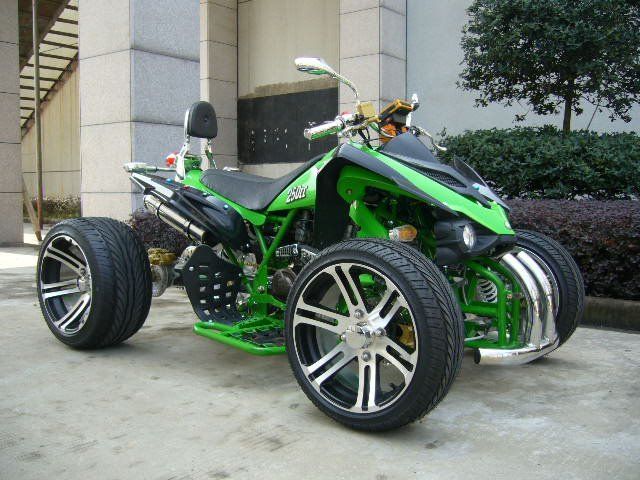 Always follow the rules and recommendations for driving given in the instruction.
Always follow the rules and recommendations for driving given in the instruction.
• Always use extreme caution and drive slowly when driving in unfamiliar terrain.
• Always keep both hands on the handlebars and both feet on the footrests while riding the ATV.
• Do not operate the ATV on rough, slippery, damaged roads until you have learned and gained the practical skills necessary to control the ATV on such roads. Always be extremely careful when driving in such conditions.
• Do not operate the ATV on slopes that are too steep for the vehicle and for your experience. Practice on small descents before moving on to difficult ones.
• Always follow the appropriate instructions from the Instructor when entering a hill, check the road surface first, never enter a hill on a road that is too slippery or has a damaged surface. Shift your weight forward of the ATV, never suddenly open the throttle or change gears suddenly. Never drive up a hill at high speed.
• Always follow the appropriate instructions from the Instructor when descending and braking on the hill.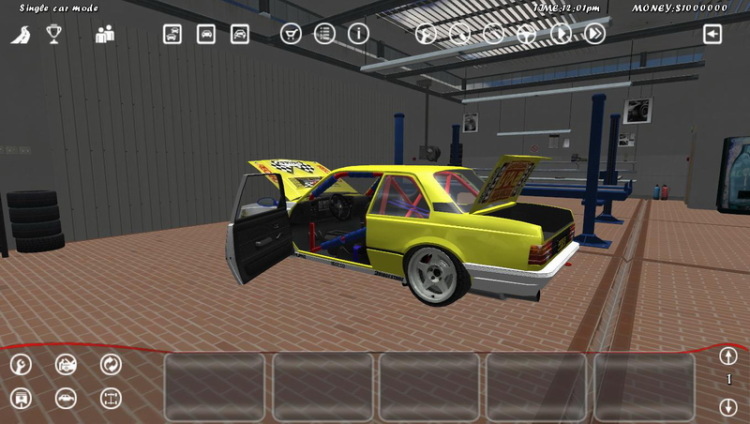 Inspect the road carefully before descending. Shift your weight back, never go down a hill at high speed. Avoid going downhill at an angle that could cause the ATV to lean to the side. Go straight down if possible.
Inspect the road carefully before descending. Shift your weight back, never go down a hill at high speed. Avoid going downhill at an angle that could cause the ATV to lean to the side. Go straight down if possible.
• Always follow the appropriate Instructor instructions for crossing inclines. Avoid slides on excessively slippery or damaged surfaces. Shift your weight to the side of the lift. Never turn the ATV around on a hill until you have mastered the turning technique. On level ground, avoid crossing steep hills whenever possible.
• To prevent the engine from stalling and the vehicle from reversing when entering a hill, use the appropriate gear and maintain a steady speed. If the engine stalls or the vehicle reverses, follow the Instructor's specific instructions.
• Always check for obstacles in the road before operating the ATV in unfamiliar terrain. Never try to overcome large obstacles on the ATV, such as large rocks or fallen trees. Always follow the Instructor's specific instructions for overcoming obstacles.
• Be careful when skidding or skidding when practicing at low speed on a flat, smooth road. On extremely slippery surfaces such as ice, drive slowly and be very careful to reduce the risk of slipping or skidding.
• Start decelerating some time before stopping.
• Be aware that wet brakes reduce stopping power. Check your brakes after getting out of the water, if necessary, wait a while for the pads to dry out.
• Always be sure there are no obstacles or people behind you when turning.
• Never exceed the ATV's stated load capacity. The load must be properly placed and securely attached.
• Never start the engine on a slope, as this may cause damage.
• Observe age guidelines: children under 16 are not allowed to ride an ATV. Do not allow a person who does not know how to operate the ATV in a safe manner to operate the ATV.
• Avoid ATV riding on paved roads, including driveways, sidewalks, streets, and car parks.
• If you need to stop (frozen helmet glass, hands, etc. ) do not wait for the group to stop. Raise your left hand up (stop signal for ATVs following you) and gently come to a stop.
) do not wait for the group to stop. Raise your left hand up (stop signal for ATVs following you) and gently come to a stop.
The instructor has the right to stop the tour early in case of violation of these rules!!!
To prevent ATV riding from ending up in a long hospital room:
Do not drive too fast. A four-wheel drive ATV is not a car or a motorcycle. It doesn't respond as well to the driver as a car, it can't lean quickly into a corner like a motorcycle. Remember that when riding an ATV it is very easy to roll over on level ground or even crash into a tree at full speed. For example, if a stump comes across in a field under tall grass, the ATV can run into it, and then the rider will fly over the steering wheel, or at least hit it.
Never ride an ATV alone. It is best to ride with someone in a pair on two ATVs. There are a lot of situations when a partner is needed. For example, it is very difficult to put an overturned ATV on wheels, and if it covered you from above, then you won’t even be able to get out from under it alone.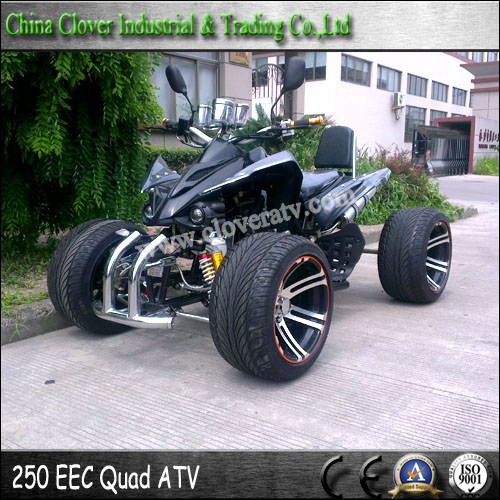 The second ATV can pull the first one out of the swamp or tow it to the camp in case of a breakdown.
The second ATV can pull the first one out of the swamp or tow it to the camp in case of a breakdown.
When passing a difficult obstacle, it is better to get out of the saddle and, carefully working with the brake and accelerator, walk alongside. You should also not go too deep into the water - you can fill the motor.
Place both feet straight on the footrests and hands on the controls.
Start the engine, let it warm up. After that, holding the brake, engage the gear.
Select direction of travel.
Release the brake and slowly press the throttle with your right thumb to start moving. The speed of movement depends on how far the damper is open.
For starters, don't try to drive fast. It is better to learn how to maneuver, handle the brake system and throttle on level ground.
Turn the steering wheel in the desired direction.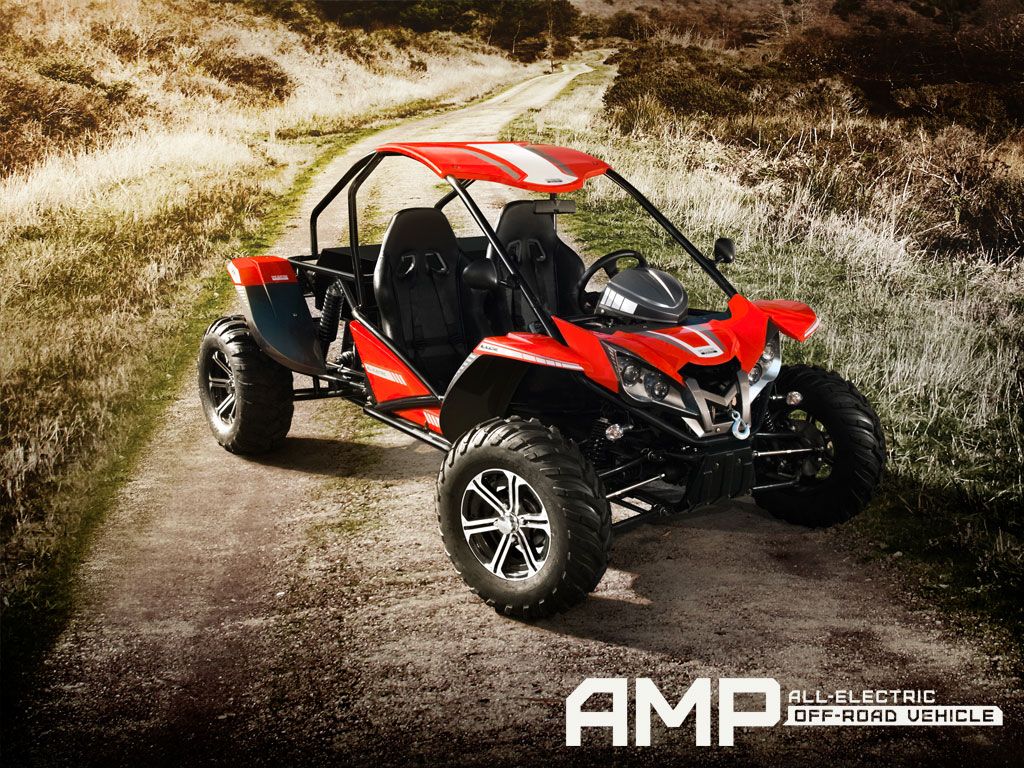 Tilt your upper body inward and rest your weight on the outside footboard. This will change the balance of traction between the wheels, and the turn will be made smoothly. Turns back are performed in the same way.
Tilt your upper body inward and rest your weight on the outside footboard. This will change the balance of traction between the wheels, and the turn will be made smoothly. Turns back are performed in the same way.
ATTENTION!!! ATVs are not designed to make sharp turns or turns at high speed!
When entering a slippery surface, slow down.
Avoid sharp and sharp turns, or the ATV will skid.
When skidding, turn the steering wheel in the direction of the skid and shift your body weight forward. Never slow down during a skid.
An all-wheel drive system can make driving on slippery surfaces much easier.
Climb up in a straight path.
ATVs are not designed to climb steep hills (over 25°).
When lifting, keep both feet on the footrests and shift your body weight forward.
Drive at a steady speed with the throttle open.
When ascending, be fully prepared for an emergency.
If the ATV has completely lost forward speed, raise yourself up and apply the front brake. If there is a complete stop, apply the rear brake as well, and then set the gear selector to park.
If the machine rolls backwards, it is necessary to get up and apply the front brake. After a complete stop, you can also apply the rear brake and move the gear selector to park mode.
ATTENTION!!! Crossing hills on an ATV is very dangerous! If possible, try to avoid hills when riding an ATV. Any incorrect action while crossing a hill can cause serious injury, or even death!!!
If you still need to cross a hill with an ATV, follow these rules:
Drive at low speed.
Tilt your torso towards the hill to transfer the weight of your upper body towards the slope. But be sure to keep your feet on the footboards.
But be sure to keep your feet on the footboards.
In order not to lose direction, the machine must be steered slightly uphill.
If the ATV begins to tip over, quickly turn the front wheel downhill or leave the vehicle immediately.
When descending a slope, you need:
Move in a straight line.
Transfer the weight of the torso to the rear of the machine.
Drive at low speed with light brakes applied.
Know how to operate the rear auxiliary brake lever.
If the machine stalls while lifting, do not let it roll down. Do the following:
Stop and put the gear selector in park mode, raise yourself up.
Turn off the engine.
Get off the ATV on the side that is on top.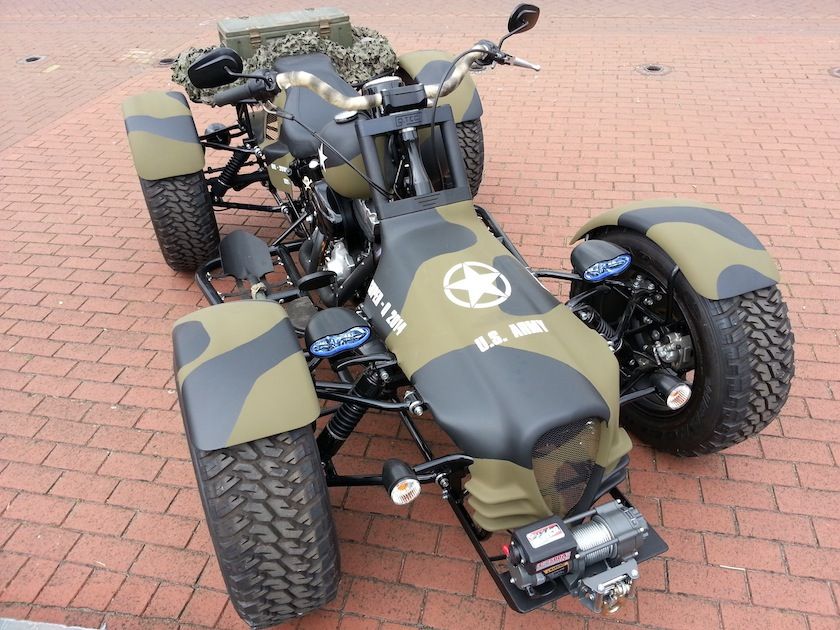 If the ATV is pointing up in a straight line, then you need to get off on the left.
If the ATV is pointing up in a straight line, then you need to get off on the left.
Stand at the top of the machine and turn the steering wheel fully to the left.
While holding the brake lever, place the shifter in first gear and allow the ATV to circle slowly to the right until the vehicle is across the slope or turns slightly down.
Shift the shifter into park and sit back on the ATV from the top side while supporting your body weight.
While holding the brake lever, start the engine while shifting the gear selector to first gear.
After releasing the brake, drive slowly until the ATV is on level ground. Control the speed with the brake.
The ATV can cross shallow water (the depth should not exceed the level of the footrests). The following rules must be observed:
Before you enter the water, you should assess the depth and speed of the current.